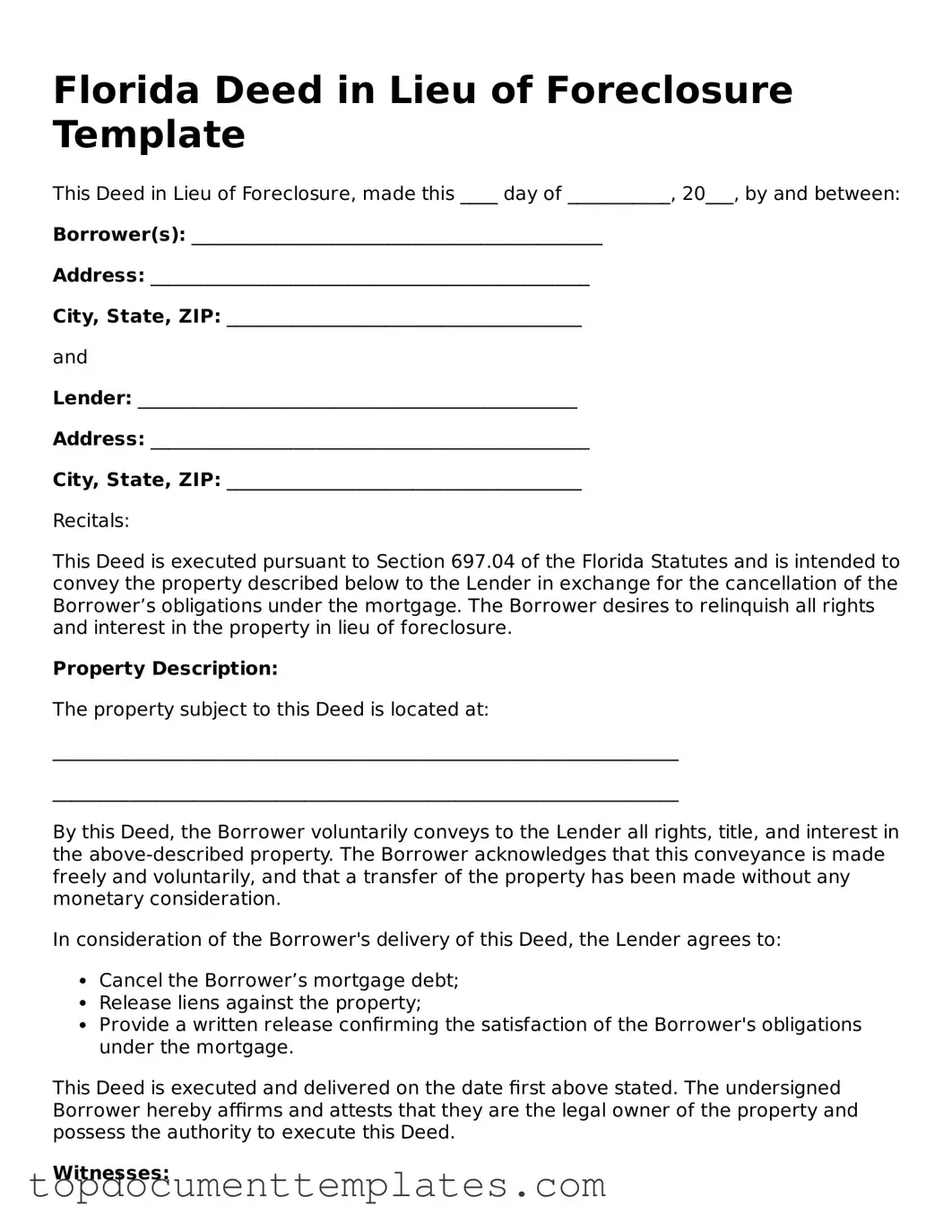In the face of financial difficulties, homeowners in Florida may find themselves exploring various options to avoid foreclosure. One such option is the Deed in Lieu of Foreclosure, a legal process that allows a homeowner to voluntarily transfer the ownership of their property back to the lender. This form serves as a crucial document in this process, detailing the agreement between the homeowner and the lender. By signing this form, the homeowner relinquishes their rights to the property, while the lender agrees to release the homeowner from the mortgage debt. This arrangement can benefit both parties: homeowners can sidestep the lengthy and often stressful foreclosure process, while lenders can recover their losses more efficiently. It's important to understand the implications of this form, including potential impacts on credit scores and future homeownership opportunities. Additionally, the Deed in Lieu of Foreclosure may come with specific conditions, such as the requirement to vacate the property and the possibility of negotiating for a deficiency waiver. Overall, this form can be a practical solution for those facing financial hardship, but it is essential to approach it with careful consideration and a clear understanding of its consequences.
